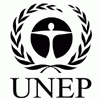Resource information
Land resources are one of nature’s most precious gifts. They feed us and help our societies and economies to thrive. Land resources are one of nature’s most precious gifts. They feed us and help our societies and economies to thrive. Some 2.5 billion agricultural smallholders worldwide manage around 500 million small farms, providing more than 80 per cent of food consumed in Asia and Sub-Saharan Africa. These resources are being degraded at an alarming pace. An estimated 33 per cent of soil is moderately to highly degraded due to erosion, nutrient depletion, acidification, salinization, compaction and chemical pollution. Each year we lose 24 billion tonnes of fertile soil and 15 billion trees, costing the economy around $40 billion. The current report focuses on land potential evaluation systems as a critical foundation for land use planning and management. More specifically, land potential evaluation systems are needed to sustain and increase the provision of ecosystem services in the context of climate change, persistent land degradation and increasing global population and per-capita consumption levels by (a) guiding land tenure and land redistribution, and (b) promoting innovation to sustainably increase productivity and resource efficiency, including through sustainable intensification. Moreover, they can increase knowledge of locally-utilized food varieties already adapted to specific land environments. The application of land evaluation to land use planning and management is limited by four factors. The first is a lack of understanding of how to select and apply appropriate, currently available tools. The second is that existing land potential evaluation tools fail to account for resilience. The third is that they emphasize limits to production based on current technologies while ignoring and, in some cases, even constraining the development of innovative management systems that could increase land potential through an increase in resource productivity. Finally, and most importantly, socioeconomic and cultural constraints to land use and management must be addressed after or at the same time as the biophysical land evaluation. These constraints include, but are not limited to, land tenure, transportation and storage infrastructure, markets, and dietary preferences.



